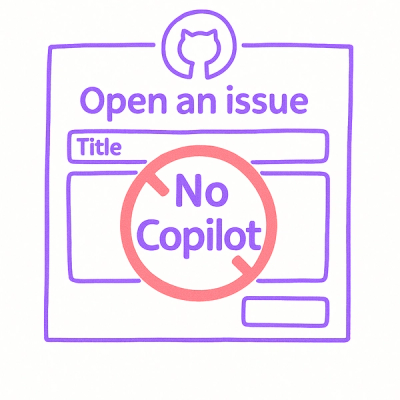
Security News
Open Source Maintainers Demand Ability to Block Copilot-Generated Issues and PRs
Open source maintainers are urging GitHub to let them block Copilot from submitting AI-generated issues and pull requests to their repositories.
Python wrapper to convert JSON into a human readable HTML Table representation.
|Latest Version| |Downloads| |Build|
.. |Build| image:: https://api.travis-ci.org/softvar/json2html.png
.. |Latest Version| image:: https://img.shields.io/pypi/v/json2html.svg :target: https://pypi.python.org/pypi/json2html
.. |Downloads| image:: https://img.shields.io/pypi/dm/json2html.svg :target: https://pypi.python.org/pypi/json2html
.. code-block:: bash
input = {
"sampleData": [{
"a":1, "b":2, "c":3
}, {
"a":5, "b":6, "c":7
}]
}
will create only one row combining the results. This feature can be turned off by explicitly passing an argument ``clubbing = False``.
attributes explicitly. Eg. giving an id, class or any data-* attribute.Click here <http://json2html.varunmalhotra.xyz/>_ for the online demo.
json2html.convert - The module's convert method accepts the following arguments:
===================== ================ Argument Description
json a valid JSON; This can either be a string in valid JSON format or a python object that is either dict-like or list-like at the top level.
table_attributes e.g. pass id="info-table" or class="bootstrap-class"/data-* to apply these attributes to the generated table
clubbing turn on[default]/off clubbing of list with same keys of a dict / Array of objects with same key
encode turn on/off[default] encoding of result to escaped html, compatible with any browser
escape turn on[default]/off escaping of html tags in text nodes (prevents XSS attacks in case you pass untrusted data to json2html)
===================== ================
.. code-block:: bash
$ pip install json2html
Or, Download here and run python setup.py install after changing directory to /json2html
Example 1: Basic usage
.. code-block:: python
from json2html import *
input = {
"name": "json2html",
"description": "Converts JSON to HTML tabular representation"
}
json2html.convert(json = input)
Output:
.. code-block:: bash
<table border="1"><tr><th>name</th><td>json2html</td></tr><tr><th>description</th><td>converts JSON to HTML tabular representation</td></tr></table>
============ ======================================================== name json2html
description Converts JSON to HTML tabular representation ============ ========================================================
Example 2: Setting custom attributes to table
.. code-block:: python
from json2html import *
input = {
"name": "json2html",
"description": "Converts JSON to HTML tabular representation"
}
json2html.convert(json = input, table_attributes="id=\"info-table\" class=\"table table-bordered table-hover\"")
Output:
.. code-block:: bash
<table id="info-table" class="table table-bordered table-hover"><tr><th>name</th><td>json2html</td></tr><tr><th>description</th><td>Converts JSON to HTML tabular representation</td></tr></table>
Example 3: Clubbing same keys of: Array of Objects
.. code-block:: python
from json2html import *
input = {
"sample": [{
"a":1, "b":2, "c":3
}, {
"a":5, "b":6, "c":7
}]
}
json2html.convert(json = input)
Output:
.. code-block:: bash
<table border="1"><tr><th>sample</th><td><table border="1"><thead><tr><th>b</th><th>c</th><th>a</th></tr></thead><tbody><tr><td>2</td><td>3</td><td>1</td></tr><tr><td>6</td><td>7</td><td>5</td></tr></tbody></table></td></tr></table>
======== ======= ======= a c b
1 3 2
5 7 6 ======== ======= =======
Example 4: Each row for different key(s) of: Array of Objects
.. code-block:: python
from json2html import *
input = {
"sample": [{
"a":1, "b":2, "c":3
}, {
"1a1":5, "1b1":6, "c":7
}]
}
json2html.convert(json = input)
Output:
.. code-block:: bash
<table border="1"><tr><th>sample</th><td><ul><li><table border="1"><tr><th>a</th><td>1</td></tr><tr><th>c</th><td>3</td></tr><tr><th>b</th><td>2</td></tr></table></li><li><table border="1"><tr><th>1b1</th><td>6</td></tr><tr><th>c</th><td>7</td></tr><tr><th>1a1</th><td>5</td></tr></table></li></ul></td></tr></table>
Example 5: [Source: json.org/example <http://json.org/example>_]
.. code-block:: python
from json2html import *
input = {
"glossary": {
"title": "example glossary",
"GlossDiv": {
"title": "S",
"GlossList": {
"GlossEntry": {
"ID": "SGML",
"SortAs": "SGML",
"GlossTerm": "Standard Generalized Markup Language",
"Acronym": "SGML",
"Abbrev": "ISO 8879:1986",
"GlossDef": {
"para": "A meta-markup language, used to create markup languages such as DocBook.",
"GlossSeeAlso": ["GML", "XML"]
},
"GlossSee": "markup"
}
}
}
}
}
json2html.convert(json = input)
Output:
.. code-block:: bash
<table border="1"><tr><th>glossary</th><td><table border="1"><tr><th>GlossDiv</th><td><table border="1"><tr><th>GlossList</th><td><table border="1"><tr><th>GlossEntry</th><td><table border="1"><tr><th>GlossDef</th><td><table border="1"><tr><th>GlossSeeAlso</th><td><ul><li>GML</li><li>XML</li></ul></td></tr><tr><th>para</th><td>A meta-markup language, used to create markup languages such as DocBook.</td></tr></table></td></tr><tr><th>GlossSee</th><td>markup</td></tr><tr><th>Acronym</th><td>SGML</td></tr><tr><th>GlossTerm</th><td>Standard Generalized Markup Language</td></tr><tr><th>Abbrev</th><td>ISO 8879:1986</td></tr><tr><th>SortAs</th><td>SGML</td></tr><tr><th>ID</th><td>SGML</td></tr></table></td></tr></table></td></tr><tr><th>title</th><td>S</td></tr></table></td></tr><tr><th>title</th><td>example glossary</td></tr></table></td></tr></table>
.. code-block:: bash
cd test/
python run_tests.py
Tested with Python 2.6, 2.7 3.4, and 3.5.
Michel Mueller: @muellermichel
table_attributes.Daniel Lekic: @lekic
Kyle Smith: @smithk86
The `MIT license <https://opensource.org/licenses/MIT>`_
Copyright (c) 2014-2017 Varun Malhotra
Permission is hereby granted, free of charge, to any person obtaining a copy of this software and associated documentation files (the "Software"), to deal in the Software without restriction, including without limitation the rights to use, copy, modify, merge, publish, distribute, sublicense, and/or sell copies of the Software, and to permit persons to whom the Software is furnished to do so, subject to the following conditions:
The above copyright notice and this permission notice shall be included in all copies or substantial portions of the Software.
THE SOFTWARE IS PROVIDED "AS IS", WITHOUT WARRANTY OF ANY KIND, EXPRESS OR IMPLIED, INCLUDING BUT NOT LIMITED TO THE WARRANTIES OF MERCHANTABILITY, FITNESS FOR A PARTICULAR PURPOSE AND NONINFRINGEMENT. IN NO EVENT SHALL THE AUTHORS OR COPYRIGHT HOLDERS BE LIABLE FOR ANY CLAIM, DAMAGES OR OTHER LIABILITY, WHETHER IN AN ACTION OF CONTRACT, TORT OR OTHERWISE, ARISING FROM, OUT OF OR IN CONNECTION WITH THE SOFTWARE OR THE USE OR OTHER DEALINGS IN THE SOFTWARE.
FAQs
JSON to HTML Table Representation
We found that json2html demonstrated a healthy version release cadence and project activity because the last version was released less than a year ago. It has 1 open source maintainer collaborating on the project.
Did you know?

Socket for GitHub automatically highlights issues in each pull request and monitors the health of all your open source dependencies. Discover the contents of your packages and block harmful activity before you install or update your dependencies.

Security News
Open source maintainers are urging GitHub to let them block Copilot from submitting AI-generated issues and pull requests to their repositories.

Research
Security News
Malicious Koishi plugin silently exfiltrates messages with hex strings to a hardcoded QQ account, exposing secrets in chatbots across platforms.

Research
Security News
Malicious PyPI checkers validate stolen emails against TikTok and Instagram APIs, enabling targeted account attacks and dark web credential sales.